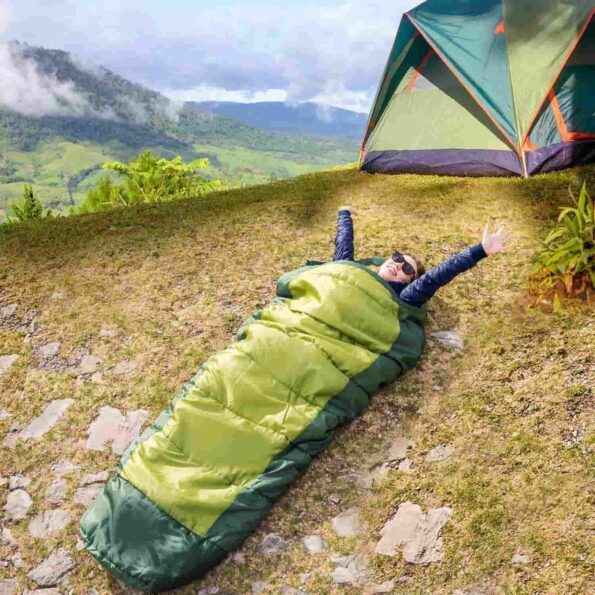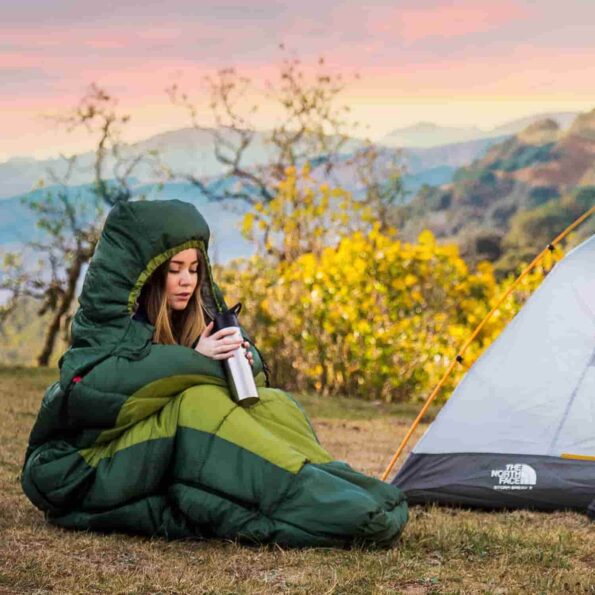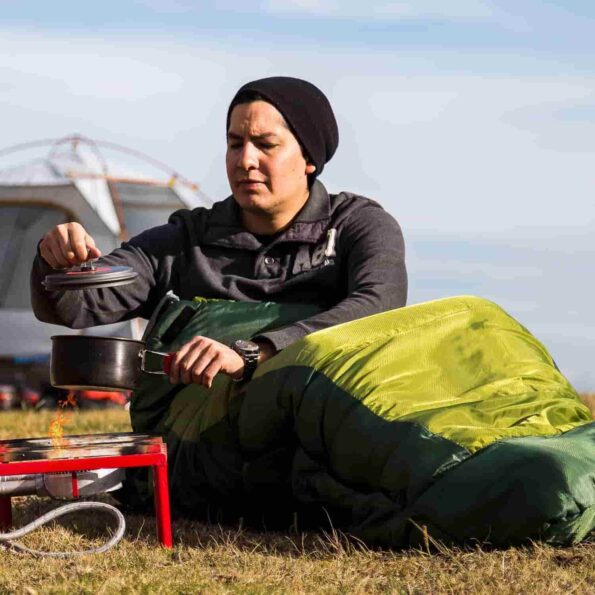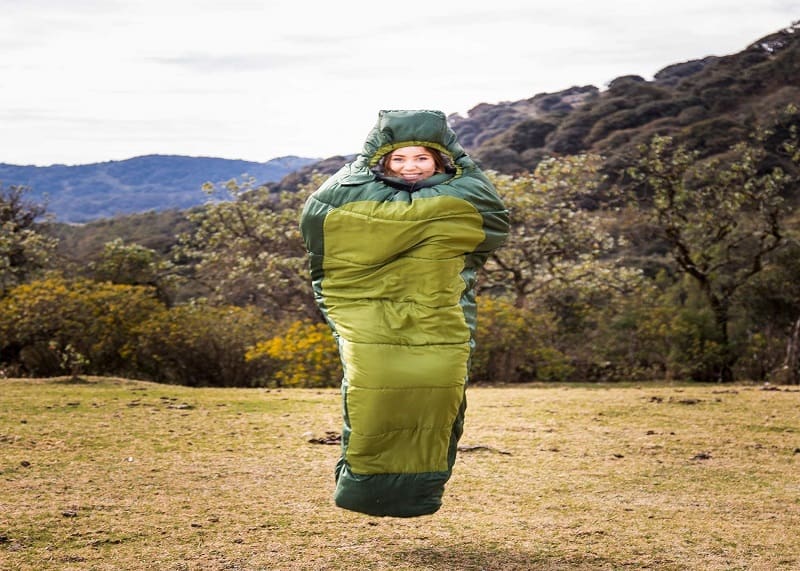The Best Mummy Sleeping Bags are a perfect complement for those seeking a balance between warmth and comfort. Mummy-type sleeping bags are known by all camping lovers.
When you are looking for a sleeping bag, you will quickly find there are A lot of options out there. We spent countless hours testing Backpacking Sleeping Bags to bring you this list of the best ones on the market. Best Mummy Sleeping Bags in fluffy piles of down was hard work, but somebody had to do it.
For spring, summer, autumn or winter, the camping sleeping bags are designed for camping at any time of the year, even being the kings on the dark and icy winter nights.
You May Also Like:-
- How to Sharpen a Karambit
- Best Karambit Knife
- Double-Edged Karambit
- Best Folding Karambit
- Best Soft Cooler
- Best Santoku Knife
- Best Kitchen Utensil Sets
- Best Valet Tray
- Best Tire Cleaner
- Best Pocket Knife for Kid
- Best Folding Knife Under 100
- Best Japanese Knife Set
Parts of The Best Mummy Sleeping Bags

The Best Mummy Sleeping Bags
1. The Base of The Bag
This is undoubtedly one of the important aspects of this type of sleeping bag. The base of the bag must be as wide and spacious as possible, to facilitate the movement of the legs inside.
2. Filling Material
It is important that we are clear that the function of sleeping bag filling materials is not to act as sources of heat emission. On the contrary, its function is to reach the maximum comfort temperature as much as possible, which will keep it warm inside, thus preventing body heat from evaporating to the outside. The three main filling materials in sleeping bags are Feather, down and synthetic fibre.
3. Insulating Layers
Insulating layers allow the filling material to be efficiently distributed throughout the sleeping bag. Its objective is to reduce the number of cold spots so that the heat spreads evenly. This is achieved in different ways: Using straight, oblique or radial layers that improve both the calorific performance and the design of the bag.
4. Headwrap
This is a strap that allows you to adjust the tightness of the bag so that the heat stays inside for longer.
5. Double Zippers
Allow better opening, closing and greater protection. Its advantage is that you can open and close the bag according to changes in temperature. Some models of sleeping bags include a thermal placket with excellent insulating properties, and that is very effective against rain, wind and snow.
6. Differentiated Seams
The sleeping bags that have the best features have asymmetric and separate seams. In this way, they prevent the cold from passing through the fabric through them.
7. Outer Fabric
For the outer fabric, materials such as nylon (which is a synthetic fibre) or polyester are commonly used. Synthetic fibres artificially try to produce the same effects as down or feathers. They have the advantage of being better insulators in high humidity conditions and can be machine washed, but on the other hand, they get dirty relatively easily and are heavier.
8. Interior Fabric
The filling fabric of mummy-type sleeping bags is usually either cotton, natural fibres (feather or down), or synthetic fibres (nylon). Each one has its own advantages and disadvantages and is more or less suitable depending on the season of the year in which we are going to camp. For example, nylon is a lighter material than cotton, but if it is very hot, sweat makes it stick to the skin. On the other hand, cotton absorbs moisture very well, in addition to providing softness, comfort and retaining heat well during the winter season.
9. Adjustable Hood
Its function is to isolate the head from the cold. A good fit between the girdle and the hood will reduce heat loss much more efficiently. (Some models include a thermal collar, which is a piece that allows the entrance of the bag to be left totally or partially open, to prevent loss of body heat).
15 Best Backpacking Sleeping Bags in 2023

Best Backpacking Sleeping Bags
Here is the list of the top 15 Best Mummy Sleeping Bags:
Editor’s Note: We will update this list as more Best Mummy Sleeping Bags hit the market.
Things To Consider Before Buying The Best Camping Sleeping Bags

Best Camping Sleeping Bags
1. Size
In a mummy-type sleeping bag, the size is especially important since it depends on it whether the interior space that has to be heated is larger or smaller. Therefore, we must choose an ergonomic bag that adapts as best as possible to our size. On the other hand, we must not forget that in this type of bag, a person must be completely covered (head included), always seeking a balance between comfort and thermal insulation, minimizing the number of cold spots throughout the entire interior space of the bag. coat.
2. Season of The Year
At this point, the temperature that a human being can withstand inside the bag comes into play. For example, mummy sleeping bags, based on the European standard UNE-EN 13537, are prepared to withstand temperatures below -5ºC, although each manufacturer specifies the optimal temperature range on their product labels.
When we talk about extreme temperatures for sleeping bags, we are referring to the temperature at which a standard woman can stay, without reaching the degree of hypothermia (women are 5ºC more sensitive to cold than men, hence the object of the study). This is called the survival temperature threshold.
That said, we can make the following classification:
1. Mummy Sleeping Bags 2 Seasons
They are ideal for summer periods when temperatures are warm. Made with natural or synthetic fibre materials, they are the most used by those who practice hiking, trekking or cycling, due to their lightweight, low compression and ease of transport.
2. Mummy Sleeping Bags 3 Seasons
3-season mummy sleeping bags generally cover the so-called transitional temperature range (between comfort and limit temperatures). Ideal for free shelters, camping or non-winter bivouacs. There is a wide variety of models of this type of sleeping bag on the market, given its versatility and versatility, although, in return, they are somewhat bulkier, so they are bags designed for several days or weeks of camping and in somewhat harsher weather conditions. harshest (periods between late summer, autumn and early winter).
3. Mummy Sleeping Bags 4 Seasons
As its name suggests, the 4-season mummy sleeping bags are designed for use and enjoyment in all seasons of the year. For this type of bag, the comfort temperature is around 5ºC and -12ºC. There is another subcategory within the 4-season bags, which are those classified as expedition bags, very heavy and bulky and designed for areas of snow and extreme cold, where the temperature is below -20ºC.
3. Material
At this point, we differentiate between two large divisions of filling material: synthetic fibre and natural fibre.
Fibre or feather? It depends on the situation and the personal tastes of each person. Actually both work in the same direction: Maximize the thermal efficiency of the sleeping bag. There are people who prefer to use down padding throughout the year, while others prefer to use synthetic fibre in the summer period and there are also those who understand that it is necessary to use both materials, depending on the time of year in which they are going to camp. Let’s see both types of filling:
Synthetic Fibre
Synthetic fibre is a much cheaper material than natural fibre and, therefore, it is a good option, especially if what we are looking for is a light sleeping bag for spring and summer. More and more manufacturers are using this material to make sleeping bags, because in recent years its quality has increased, sometimes reaching the height of down bags. Now let’s see what its advantages and disadvantages are:
ADVANTAGES
- Cheaper material than natural fibre.
- Preserves heat well even in humid conditions.
- Not sensitive to machine washing.
- Fast drying and good resistance.
INCONVENIENCES
- Its thermal performance, measured in cuins (cubic inch per ounce), is lower than that of feathers.
- It is heavier and occupies more volume than natural fibre.
- Natural fibre mummy sleeping bags (feather and down)
At the other extreme, we have feather and down bags (natural fibres). They are excellent as thermal insulators, and extremely light but more expensive than synthetic fibre. Ideal for long days in the mountains, they have a really good warmth-to-weight-comfort ratio.
Did you know?… Also called down, duvet is a type of feather that grows on the neck and chest of certain birds. It is much lighter than down, and has much more efficient thermo-insulating and moisture conditions than any other material.
Its main Advantages And Disadvantages are:
ADVANTAGES
- Excellent thermal performance (Reaching more than 1000 cuins).
- Much longer lifespan than synthetic fibre.
- Weighs and occupies much less.
- Great levels of comfort and convenience.
INCONVENIENCES
- The price is much higher than synthetic fibre.
- Requires much more careful maintenance.
- Extremely slow drying.
CONCLUSION
Mummy-type resting sacks are an awfully flexible arrangement, since able to discover brands and models on the advertisement (just like the ones we have appeared you in this buying direct), uncommonly arranged for 2, 3 or 4 seasons of the year. which withstand a wide extent of temperatures. On the other hand, they are fabulous travel companions in tall mountain camping, where they truly abuse their warm productivity characteristics. For all these reasons, at Acampada Perfecta we prescribe them overall for sports modalities such as trekking, climbing, mountaineering, or tall mountain climbing.
Disclaimer
“All brand names and images are Registered Trademarks of their respective companies. All manufacturers names, numbers, symbols and descriptions are used for reference purposes only, and it is not implied that any part listed is the product of these manufacturers or approved by any of these manufacturers.”




























